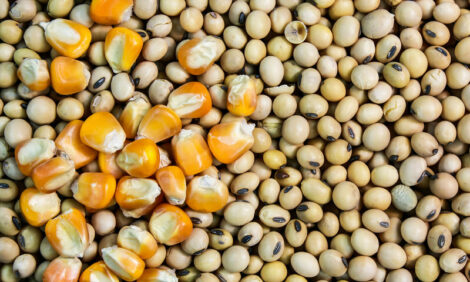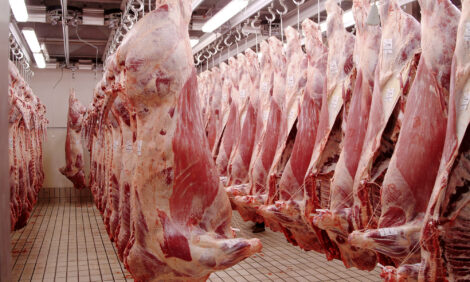



Special report: FAD outbreak could cost US agriculture $200 billion over 10 years
Experts say that pork producers would lose access to export markets within days if FAD outbreak was to occur on US soil.International shipments of US pork and breeding hogs would cease. And industry officials would have to work to regain the confidence of export markets, a process that could take years. Currently, exports account for 26 percent of the nation’s pork production. On the domestic front, pork prices would ultimately drop dramatically, the experts added.
Estimates of the financial impact for each of the three trade-limiting diseases - foot-and-mouth disease (FMD), classical swine fever (CSF) and African swine fever (ASF) - are in the billions per year, according to researchers like Dermot Hayes, PhD, an agricultural economist at Iowa State University.
Massive losses for pork producers and supporting industries
Exactly how many billions? No one knows for sure, but a 2011 study led by Hayes - the most recent of its kind - projected that FMD would cost the US pork and beef industries about $12.9 billion a year in exports. (FMD is the only one of the three trade-limiting diseases that affects other forms of livestock, including cattle, sheep and deer.1)
The study also projected a decline in corn prices by about 20 cents per bushel and soybeans by 60 cents per bushel.
Looking specifically at swine diseases, Hayes estimated that in the first year of an ASF outbreak, revenue losses would be $8 billion for pork, $4 billion for corn and $1.5 billion for soybeans.
Under the study’s CSF scenario, pork prices could drop 45 percent while corn prices could decline by about 10 cents per bushel and soybean prices by 50 cents per bushel. Hayes and his team of researchers attributed the projected soybean losses to the amount of soybean meal used in the hog industry.
Another FMD study, led by Ted Schroeder, PhD, an agricultural economist at Kansas State University, projected a 95 percent drop in all US red-meat exports - including lamb, as well as live animals - for at least three months after authorities have cleared the last FMD case.2
In addition, there would be other assorted costs such as industry response, disease containment and elimination, and animal euthanasia or disposal, said Patrick Webb, DVM, director of swine health programmes, National Pork Board (NPB).
“We’re talking billions and billions of dollars of lost revenue just from one case being reported,” Webb told Pig Health Today. “It would take an extremely hard hit on the agricultural economy, across all sectors because the agricultural economy and our communities are so tied together. If one sector is hurting because of a disease issue, it usually ends up hurting others.”
Ultimately, a sustained FAD outbreak could cost the US agricultural sector about $200 billion over 10 years, according to estimates by Schroeder and Hayes. That’s nearly one-third of the Pentagon’s fiscal year 2017 budget of $590 billion.
To be sure, most of the focus in recent months has been on ASF, which has been marching steadily across eastern Europe and China. But ASF stands out for a couple of other reasons. Unlike the other two trade-limiting diseases, it has no vaccine, and some strains have mortality rates of nearly 100 percent, according to the Center for Food Security and Public Health.
Impact on US market
An ASF or CSF outbreak would saturate the domestic market with pork, causing prices to crash, perhaps by as much as 50 percent, NPB reported.
Schroeder’s study assumes that 10 percent of domestic consumers would refrain from eating pork, beef or lamb products during an FMD outbreak. It assumes that following the end of the outbreak, consumer demand would remain depressed by 5 percent for one quarter (3 months) due to lack of confidence in the product.
Further, the FMD study projects that the US would lose 95 percent of all red-meat exports, including pork, beef and lamb.
FAD-free for 40 years
The US pork sector has been FAD-free for 40 years. CSF, also known as hog cholera, was eradicated in 1978. The last recorded FMD incident was in 1929. As of November 2018, the US has never had a documented case of ASF. In fact, the closest that the ASF virus has ever come to North America was in Haiti in the late 1970s. With the aid of the US and Canada, the Haitian government responded by depopulating the swine population on the Caribbean island.
Increased international travel, higher volumes of foreign trade and the ability of certain viruses to live in some feed ingredients has made pork production more susceptible than ever to FADs. The swine-oriented FADs also can infect feral pigs and wild boars, which increases the risk of spread to the domestic herd, further complicating matters. No one knows for sure how many wild pigs are in the US, but by some estimates there are 6 million.
Of course, the US pork-industry structure has changed considerably in the last 40 years. Notably, there has been a shift away from smaller farrow-to-finish production, where pigs are born and raised on the same farm, to large, multi-site production systems that routinely move piglets from sow farms to wean/grow/finish sites, sometimes across several states.
“We move 1 million pigs a day in the US, which increases the danger that by the time we find [one of these diseases] it may have already spread,” said James Roth, DVM, PhD, director of the Center for Food Security and Public Health and a professor at Iowa State University’s College of Veterinary Medicine.
Experts warn that eliminating the disease and restoring customer confidence are the biggest challenges associated with FAD outbreaks.
“If we had FMD or CSF, it would take a few years [to eliminate], but we could take care of those two FADs,” Roth told Pig Health Today.
However, if ASF got into the feral-pig population, he added, it would be difficult to eliminate.
“There’s been a lot of research but it’s a difficult virus,” he said. “There’s still no vaccine. Portugal and Spain had ASF (beginning in the late 1950s and early 1960s), and it took them 30 years to eradicate it.”
This is the first in a two-part series on foreign animal diseases. Part 2 looks at what the US pork industry is doing to head off an FAD outbreak and to prepare for one.
| References | ||||
|---|---|---|---|---|
| 1 Hayes D, Fabiosa J, El Obeid A, Carriquirry M. | ||||
| (2011) | Economy Wide Impacts of a Foreign Animal Disease in the United States. Working Paper 11-WP 525. Center for Agricultural and Rural Development, Iowa State University. | |||
| 2 Schroeder TC, Pendell DL, Sanderson MW, McReynolds S. | ||||
| (2015) | Economic Impact of FMD Emergency Vaccination Strategies in the United States. J Agric Appl Econ, 47(1). |






